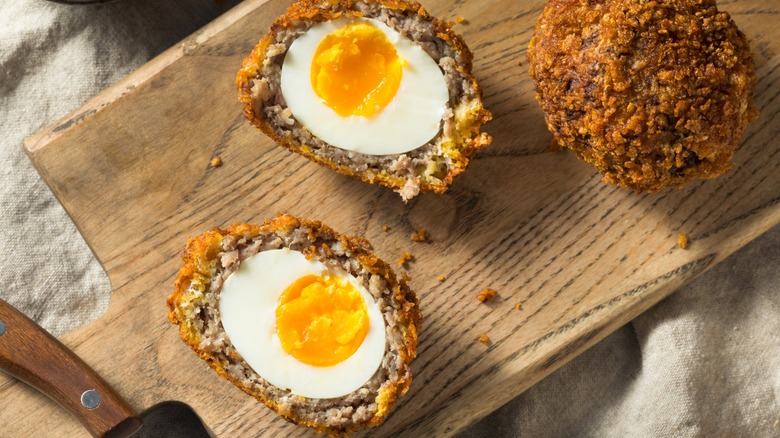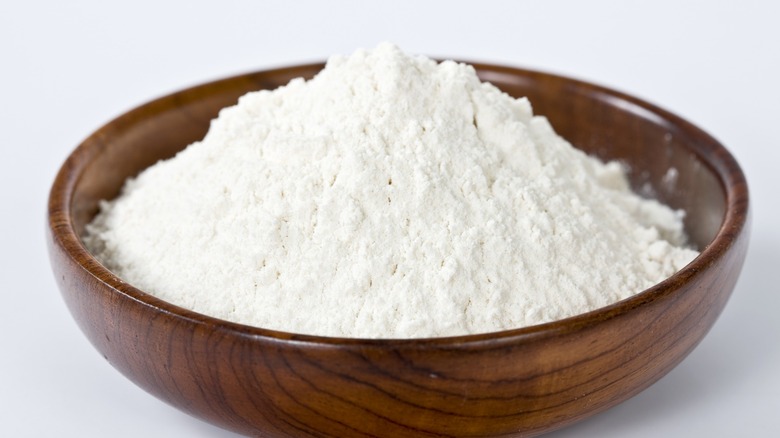Why You'll Want To Keep Flour On Hand When Making Scotch Eggs
What's not to love about a scotch egg? It's a delightful treat that marries the flavors and textures of a tender boiled egg, and the rich heartiness of sausage meat, all crowned with a crispy breadcrumb shell. But behind the delicious creation lies an architectural marvel achieved by crafting the perfect arrangement of the varied layers. Creating this harmony is perhaps one of the reasons novice cooks find these meat-wrapped eggs daunting to make.
When done right, each layer contributes to not only the visual appeal of the dish but also ensures a seamless cooking process. The secret? Use flour when coating your boiled egg. At first glance, flour might seem like a superfluous ingredient, after all, the main components — eggs, sausage meat, and breadcrumbs — are clear. But when it comes to crafting the perfect scotch egg, flour serves as the all-important adhesive that ensures the sausage clings properly to the egg, setting the stage for everything that follows.
Flour is the all-important edible glue when preparing scotch eggs
To understand the importance of flour in preparing your scotch eggs, we must first appreciate the structure of the whole dish. Imagine the boiled egg as a glossy canvas. It's smooth and relatively slippery. If you attempt to coat it with sausage, this slippery surface poses a challenge as the meat struggles to cling and will probably slide off or create uneven patches. If the sausage layer isn't uniform or secure, the breadcrumb coat can exacerbate the issue, leading to a scotch egg that's prone to disintegrating during or after the cooking process. This is where our trusty flour comes to the rescue.
After peeling your boiled eggs, lightly covering them in flour is like priming the surface. The flour offers a matte texture that readily binds with the sausage meat, eliminating the slip-and-slide problem. The thin, floury layer acts like a culinary glue, ensuring the sausage adheres to the egg uniformly and firmly. As a result, when adding the breadcrumb layer, the foundation is already sturdy and less prone to falling apart.
Moreover, flour aids in preventing any potential moisture issues. Eggs, after boiling, can sometimes have residual moisture on their surface, and by coating them lightly with flour, you're also absorbing any unwanted dampness, ensuring that the sausage and breadcrumb layers don't become soggy. So, if you're looking to perfect your scotch egg game, remember to include your trusty flour in the preparation process.

